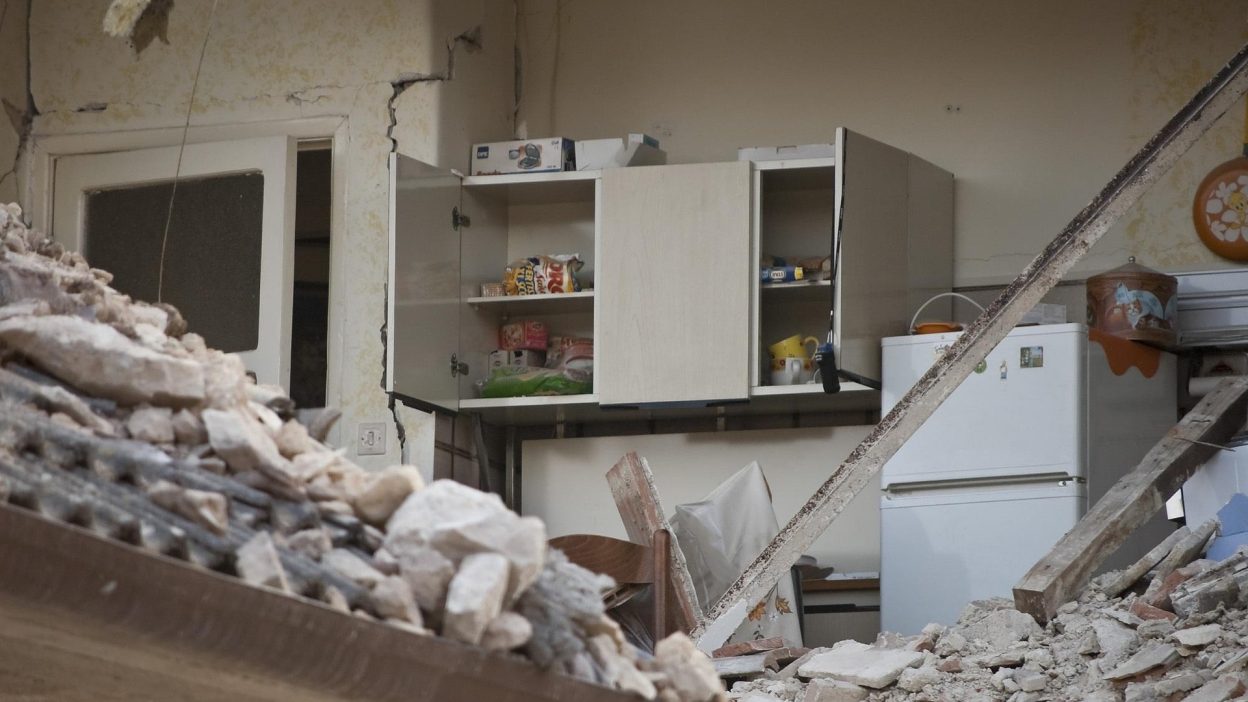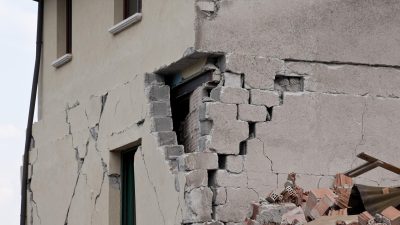The Deadly Tremor That Exposed Turkey’s Fatal Failures In Disaster Management
1. The Ground Trembled: The Transformative Impact of the 1983 Erzurum Earthquake
The 1983 Erzurum Earthquake, measuring 6.9 on the Richter scale, left behind widespread devastation in Turkey’s Erzurum region. Its aftermath forever changed how Turkey viewed natural disasters, pushing the country to rethink its approach to seismic preparedness and response. The earthquake tore through buildings, especially older structures, resulting in a tragic loss of life and property.
Beyond the immediate devastation, the earthquake acted as a wake-up call, revealing the critical flaws in Turkey’s infrastructure and disaster management systems. The event highlighted the urgent need for improved regulations and safety standards across the country, especially in seismically active regions.
2. The Hidden Realities of the 1983 Erzurum Earthquake
While much has been reported about the destruction caused by the earthquake, there are several overlooked aspects of the disaster. One of the most glaring issues was the disparity in available resources for the immediate disaster response. Local authorities were underprepared, which led to delays in providing necessary aid, exacerbating the loss of life.
Furthermore, a significant gap in public education regarding earthquake preparedness was exposed. Many residents were unprepared for the scale of the disaster, which contributed to a higher death toll. Additionally, although international assistance did reach Turkey, it was insufficient, and the country’s own emergency response capabilities were put to the test.
3. The True Cost of the 1983 Erzurum Earthquake
- Economic Consequences: The earthquake caused damage worth over $200 million, affecting homes, vital infrastructure, and businesses. The destruction of many workplaces significantly impacted the local economy, hampering recovery efforts for years.
- Loss of Life: Around 1,000 people lost their lives in the earthquake, with thousands more suffering injuries. The scale of the disaster was immense, and local medical facilities struggled to provide the necessary care to those affected.
- Emotional Damage: In addition to the physical damage, many survivors were left with deep emotional scars. The trauma of losing loved ones, homes, and a sense of security had long-term psychological effects on the community.
4. Devastating Aftereffects: The Hidden Costs of the 1983 Erzurum Earthquake
While much of the focus after the earthquake was on rebuilding the physical infrastructure, the psychological toll on the survivors was often neglected. Many individuals who lost family members or their homes experienced prolonged trauma, which went largely unaddressed. Psychological support and counselling were insufficient, leaving many people to cope with the emotional burden on their own.
On an economic level, the disaster had far-reaching consequences. Businesses were crippled, and industries suffered due to the widespread destruction. It was evident that the lack of preparation had a lasting effect, and the people of Erzurum faced years of hardship in the aftermath.
5. Why the 1983 Erzurum Earthquake’s Impact Was Even Greater Than Anticipated
- Underreported Magnitude: Initially, the earthquake was thought to be less powerful than it truly was. This miscalculation led to a delayed response from local authorities, allowing the disaster to cause more harm than necessary.
- Insufficient Structural Safety: Erzurum’s buildings, many of which were old and not built to withstand strong earthquakes, collapsed easily under the seismic activity. This lack of preparedness significantly contributed to the severity of the damage.
- Slow Aid Arrival: The response to the earthquake was hampered by logistical challenges. While international help eventually arrived, local efforts were inadequate, causing delays in providing relief to those in need.
6. In the Wake of the 1983 Erzurum Earthquake: Did We Do Enough?
The immediate response to the Erzurum Earthquake highlighted significant flaws in Turkey’s disaster response strategies. The rescue operations were slow to start, and many victims had to wait for extended periods before receiving aid. This delay resulted in avoidable deaths and prolonged suffering for many.
The event prompted a national reassessment of Turkey’s disaster preparedness plans. In the years following the earthquake, new laws were introduced, requiring buildings to adhere to stricter safety regulations. However, the real change in Turkey’s approach to disaster management did not come until subsequent earthquakes, showing how the lessons of Erzurum were not fully internalised at first.
7. Could the 1983 Erzurum Earthquake Have Been Prevented? The Startling Facts
- Absence of Early Warning Systems: The lack of early warning systems meant that many people were caught off guard by the earthquake. Without proper forecasting tools, the country was unable to prepare for or minimise the impact of the disaster.
- Weak Building Codes: Many of Erzurum’s buildings were not designed to withstand such a powerful earthquake. The lack of modern, earthquake-resistant construction contributed to the high death toll and widespread damage.
- Government Oversight: Despite the region’s seismic history, the Turkish government had not adequately prioritised disaster preparedness in Erzurum. The lack of investment in preventive measures exacerbated the effects of the earthquake.
8. The 1983 Erzurum Earthquake: Exposing Our Vulnerabilities
The Erzurum Earthquake laid bare critical weaknesses in Turkey’s infrastructure and disaster management systems. Although the region had experienced smaller tremors in the past, it was unprepared for a major seismic event. The earthquake destroyed buildings that were not designed with modern seismic standards in mind, revealing a stark gap in planning and regulation.
Additionally, the lack of coordinated communication between local and national authorities hindered the effectiveness of the response efforts. The disaster exposed how unprepared many Turkish cities were for large-scale disasters and underscored the need for better infrastructure, training, and public education on disaster preparedness.
9. The Erzurum Earthquake: What the Media Missed
While media coverage of the 1983 Erzurum Earthquake focused on the immediate destruction, several important aspects were left out. The long-term economic struggles of survivors were rarely discussed, and the psychological trauma that many experienced was not adequately highlighted. Survivors often had to rebuild their lives with little assistance, and the mental health effects were left unaddressed.
Furthermore, the media’s portrayal of the disaster as an isolated incident downplayed the systemic issues in Turkey’s earthquake preparedness. This lack of comprehensive reporting hindered a fuller understanding of the underlying factors that contributed to the disaster, such as inadequate building standards and insufficient emergency training.
Conclusion: The 1983 Erzurum Earthquake – The Lessons We’ve Learned (And Haven’t)
The 1983 Erzurum Earthquake remains a defining moment in Turkey’s history, bringing both visible and invisible consequences. While the country has made strides in improving its earthquake preparedness and infrastructure, the full lessons of the event are still being realised. The earthquake exposed critical flaws in Turkey’s disaster response systems and highlighted the need for ongoing improvements in public awareness and infrastructure resilience.
As Turkey continues to grapple with seismic risks, the 1983 Erzurum Earthquake serves as a reminder of the importance of constant vigilance and the need to adapt to emerging challenges in disaster management. However, the ongoing threat of future earthquakes means that much work remains to be done to safeguard the country against another catastrophe of this scale.
5 Short FAQs
- What caused the 1983 Erzurum Earthquake?
The earthquake was a result of tectonic shifts in the Eastern Anatolian Fault Zone, a region known for seismic activity. - How many people died in the 1983 Erzurum Earthquake?
The disaster claimed the lives of around 1,000 individuals, with many more injured in the process. - What impact did the earthquake have on Erzurum?
Erzurum was heavily damaged, with collapsed buildings and destroyed infrastructure disrupting daily life. - Was the 1983 Erzurum Earthquake predicted?
No, the earthquake was unforeseen, and the lack of early warning systems left many unprepared. - What measures were taken after the 1983 Erzurum Earthquake?
Turkey introduced new regulations for building codes and disaster management to reduce the impact of future earthquakes.
References:
“1983 Erzurum earthquake”
“1983 Erzurum | Türkiye Earthquake Memory Project”
http://mcgill.ca/earthquake-memory-turkiye/article/1983-erzurum
The death toll from a weekend earthquake in eastern




